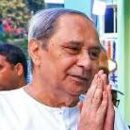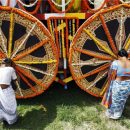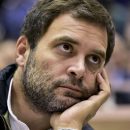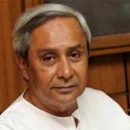President Pranab Mukharjee Inaugurated Bicentenary Celebration of Paika Bidroha of Odisha

New Delhi, 21st July: The President of India Shri Pranab Mukharjee inaugurated the “Bicentenary celebration of the heroic Paika Rebellion of Odisha, a valiant uprising of Paikas against the British rule” organised by the Ministry of Culture here Thursday. Minister of SC and ST Jual Oram, Odisha Chief Minister Nabin Pattnaik, Minister of State for Petroleum and Natural Gas Dharmendra Pradhan and Minister of State for Culture and Tourism Dr. Mahesh Sharma were present at the inaugural function.
Speaking on the occasion, President of India said that, it was indeed a privilege for him to be present on the occasion of inauguration of year-long celebration of Bi-Centenary of the Paika Bidroha of Odisha. He congratulated the people of the country and especially those of Odisha on the occasion. He stated that 40 years before the revolt of 1857, which was later termed as 1st War of Indian Independence against British Colonialism, a battle was fought under the leadership of Baxi Jagabandhu of Odisha. Many scholars, researchers and historians have opined that the Paika Rebellion of 1817 was India’s first organized armed rebellion against British Rule. He said that completion of two hundred years of this popular uprising was a special event. The legend of the heroics of Buxi Jagabandhu continues to inspire the people of Odisha. It is time, this struggle and sacrifice by a generation of Odia people got its due place in the annals of history.
The President said that the Paika uprising was in the nature of a rebellion by people of Odisha. It was aimed at upholding the rights of the Odia people and sovereignty of Odisha. Paika Rebellion was not only the rebellion of Paikas, it was a National War waged by ordinary people at the grassroots level who resented the dispossession of their Sovereign of his rights and the consequential repressive measures that followed. As we celebrate 200 years of the Paika Rebellion, it is time to remember the great history of our country and pay respect to our great heroes. Along with Buxi Jagabandu it is time to pay respects to other great warriors of Paika Bidroha who fought side by side such as Dinabandhu Samantray Mohapatra, Dama Subudhi Manjaraj, Samanta Madhaba Chandra Routray (Dalbehera of Tapanga), Pindiki Bahubalendra, Krutibas Patsani and many more heroes of Paika Bidroha.
The President congratulated the Government for recognizing this great event of our cherished history of freedom struggle. He said that the year-long celebrations should be documented for future guidance at the end of the year. He also urged historians to concentrate on indigenous source material available in folk songs and folk stories narrated over the years by one generation to another. Pre-dating what has been popularly regarded as the fist war of independence in 1857, the Paika Bidroha (Paika Rebellion) of 1817 in Odisha briefly shook the foundations of British rule in the eastern part of India. Paikas were essentially the peasant militias of the Gajapati rulers of Odisha who rendered military service to the king during times of war while taking up cultivation during times of peace. They unfurled the banner of rebellion against the British under the leadership of Baxi Jagandhu Bidyadhara as early as 1817 to throw off the British yoke. Rulers of Khurda were traditionally the custodians of Jagannath Temple and ruled as the deputy of Lord Jagannath on earth. They symbolised the political and cultural freedom of the people of Odisha. The British, having established their sway over Bengal Province and Madras Province to the north and south of Odisha, occupied it in 1803. The Gajapati King of Odisha Mukunda Deva-ll was a minor then and initial resistance by JaiRajguru, the custodian of Mukunda Deva-II, was put down brutally and Jai Rajguru was torn apart alive. A few years later, it was the Paikas under Baxi Jagabandhu, the hereditary chief of the militia army of the Gajapati King, who rose in rebellion, taking support of tribals and other sections of society. The rebellion started in March 1817 and spread quickly. Though Paikas played a larger role in the rebellion against the British, it was by no means a rebellion by a small group of people belonging to a particular class. The tribals of Ghumusar (part of present day Ganjam and Kandhmal Districts) and other sections of the population actively took part in it.
In fact, the Paika Bidroha got the opportune moment to spread when 400 tribals of Ghumsar entered Khurda protesting against the British rule. The Paikas attacked British symbols of power, setting ablaze police stations, administrative offices and the treasury during their march towards Khurda, from where the British fled. The Paikas were supported by the rajas of Kanika, Kujang, Nayagarh and Ghumusar and zamindars, village heads and ordinary peasants. The rebellion quickly spread to Purl, Pipli Cuttack and other parts of the province. The British were initially taken aback and then tried to regain lost ground but faced stiff resistance from the rebelling Paikas. Many a battle ensued with some victories to the rebels, but the British finally managed to defeat them within three months. Widespread suppression followed with many killed and imprisoned. Many more were tortured. Some rebels fought a guerilla war till 1819 but were captured and killed. Baxi Jagabandhu was finally arrested in 1825 and died in captivity in 1829. Though the Paika Bidroha enjoys a cult status in Odisha with children growing up with stories of the brave fight against the British, it has unfortunately received less attention at the national level, he said.











LETTER FROM THE EDITOR: A SPECIAL THANKS TO OUR READERS
LETTER FROM THE EDITOR: A SPECIAL THANKS TO OUR READERS